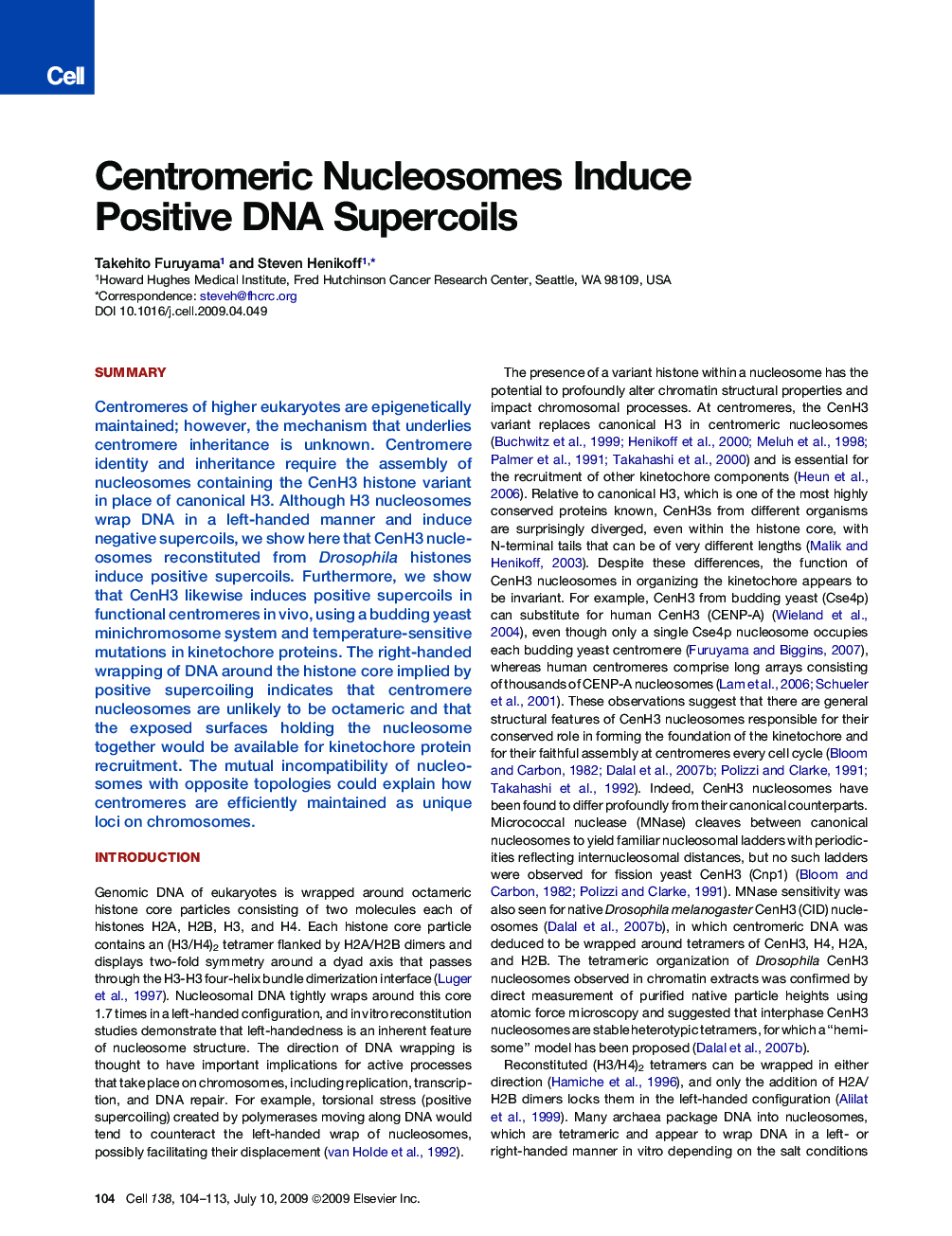| Article ID | Journal | Published Year | Pages | File Type |
|---|---|---|---|---|
| 2037120 | Cell | 2009 | 10 Pages |
SummaryCentromeres of higher eukaryotes are epigenetically maintained; however, the mechanism that underlies centromere inheritance is unknown. Centromere identity and inheritance require the assembly of nucleosomes containing the CenH3 histone variant in place of canonical H3. Although H3 nucleosomes wrap DNA in a left-handed manner and induce negative supercoils, we show here that CenH3 nucleosomes reconstituted from Drosophila histones induce positive supercoils. Furthermore, we show that CenH3 likewise induces positive supercoils in functional centromeres in vivo, using a budding yeast minichromosome system and temperature-sensitive mutations in kinetochore proteins. The right-handed wrapping of DNA around the histone core implied by positive supercoiling indicates that centromere nucleosomes are unlikely to be octameric and that the exposed surfaces holding the nucleosome together would be available for kinetochore protein recruitment. The mutual incompatibility of nucleosomes with opposite topologies could explain how centromeres are efficiently maintained as unique loci on chromosomes.
